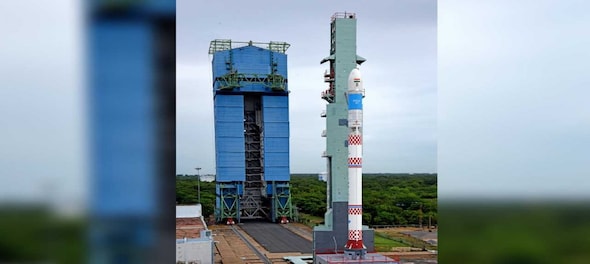
Indian Space Research Organisation's (ISRO) said the two satellites on the maiden Small Satellite Launch Vehicle (SSLV) — EOS-02 and co-passenger students satellite AzaadiSAT — were no longer usable as the SSLV-D1 placed the satellites "into 356 km x 76 km elliptical orbit instead of 356 km circular orbit".
"Satellites are no longer usable. Issue is reasonably identified," ISRO said in a tweet on Sunday, adding, "Failure of a logic to identify a sensor failure and go for a salvage action caused the deviation."
Showcasing hope, the Indian space body said, "With the implementation of the recommendations, ISRO will come back soon with SSLV-D2/."
Earlier in the day, ISRO said, "All stages performed normal. Both satellites were injected. But the orbit achieved was less than expected which makes it unstable." This statement was released after ISRO said SSLV suffered "data loss" at the terminal stage.(1/2) SSLV-D1/EOS-02 Mission update: SSLV-D1 placed the satellites into 356 km x 76 km elliptical orbit instead of 356 km circular orbit. Satellites are no longer usable. Issue is reasonably identified. Failure of a logic to identify a sensor failure and go for a salvage action
— ISRO (@isro) August 7, 2022
Last night, the countdown for the launch of India's maiden Small Satellite Launch Vehicle (SSLV) carrying an earth observation satellite and a student satellite commenced at 2.26 am on Sunday, the ISRO said.
SSLV-D1/EOS-02 Mission: the launch is scheduled at 9:18 am (IST). Watch LIVE from 08:30 am here: https://t.co/V1Bk6GZoCF pic.twitter.com/ZTYo8NFXac
— ISRO (@isro) August 7, 2022
ISRO chairman explains what happened during launch
ISRO chairman S Somanath said the entire vehicle performance was very good in the mission. "When it finally it reached the orbit and an altitude of 356 Km, the satellites were separated...However, we notice an anomaly in the placement of the satellite. The satellites were placed in an elliptical orbit in place of a circular orbit.
"When you place satellites in such an orbit (elliptical), the orbit will not stay for a long time due to atmosphere...the satellites will come down. The satellites have already come down from orbit and they are no longer usable," he said.
He said scientists are going to identify the specific problem and why isolation happened and why it went into a not-acceptable orbit.
About the mission
The ISRO embarked on a mission to place satellites that weigh up to 500 kg into the 500 km low earth orbit, as it aims for a bigger share of the demanding SSLV market. The rocket lifted off at 9.18 am from the first launchpad at the Satish Dhawan Space Centre (SHAR) here, about 135 km from Chennai.
About 13 minutes after launch, the rocket was expected to place the EOS-02 and AzaadiSAT into the intended orbit. Unlike ISRO's trusted workhorse — Polar Satellite Launch Vehicles (PSLV), the SSLV can carry payloads weighing up to 500 kg and deploy satellites into a 500 km low earth orbit.
It uses solid fuel — hydroxyl terminated polubutadiene — to fire the first three stages which takes the payloads to the desired altitude. The fourth stage comprises liquid propulsion-based Velocity Trimming Module (VTM) to place the satellites into orbit. The main payload on the 34-metre-tall rocket is the earth observation-02 satellite and co-passenger satellite AzaadiSAT, an 8 kg Cubesat designed by girl students from government schools across the country to mark the 75th anniversary of India's Independence.
The earth observation satellite designed by ISRO offers advanced optical remote sensing operating in infra-red bands with high spatial resolution. EOS-02 belongs to the microsatellite series of spacecraft. The objective of the EOS-02 is to provide inputs on thermal anomalies towards supporting applications in the domains of geo-environmental studies, forestry, hydrology, agriculture, soil, and coastal studies.
The AzaadiSAT carries 75 different payloads each weighing around 50 grams. Girl students from rural regions across the country were provided guidance to build these payloads which are integrated by the student team of 'Space Kidz India', ISRO said. The ground system developed by Space Kidz India would be utilised for receiving the data from this satellite.
Sunday's mission of ISRO is the third this year after the successful PSLV-C53 mission on June 30, which is the dedicated commercial mission of NewSpace India Ltd. On February 14, ISRO successfully placed earth observation satellite EOS-04 on board its trusted workhorse PSLV-C52/EOS-04 mission.
The radar imaging satellite was designed to provide high quality images under all weather conditions for applications such as agriculture, forestry and plantations.
(With inputs from PTI)
First Published: Aug 7, 2022 8:35 AM IST
Check out our in-depth Market Coverage, Business News & get real-time Stock Market Updates on CNBC-TV18. Also, Watch our channels CNBC-TV18, CNBC Awaaz and CNBC Bajar Live on-the-go!


Inner Manipur Lok Sabha election: BJP and Congress face off in a bid for peace amid ethnic tensions
Apr 19, 2024 7:31 AM
Lok Sabha elections 2024: Assam's Jorhat to go to polls today
Apr 19, 2024 7:23 AM
Political battle brews in Arunachal West as Kiren Rijiju seeks fourth term
Apr 19, 2024 7:22 AM
Sriperumbudur Lok Sabha Election: DMK veteran TR Baalu faces fierce competition
Apr 19, 2024 7:14 AM

